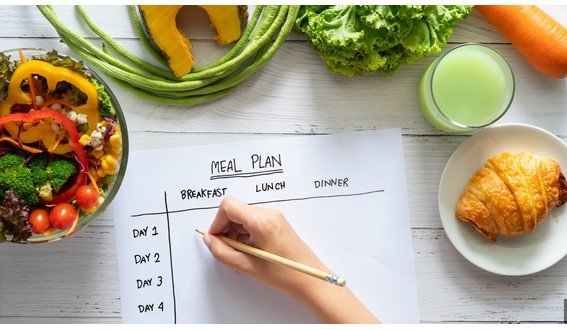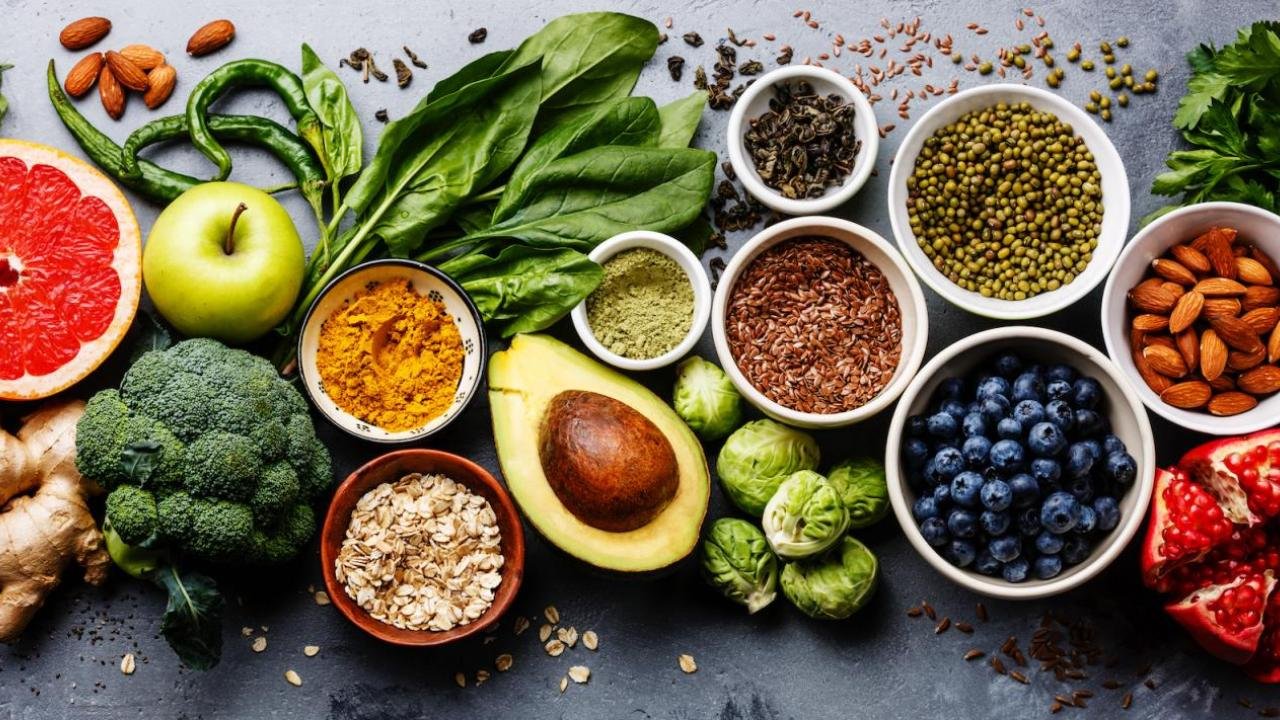Creating a balanced meal plan is an effective way to improve your nutrition, save time, and reduce stress around meal preparation. A well-thought-out meal plan ensures that you’re getting the right nutrients and helps you make healthier choices throughout the week. Whether you are looking to lose weight, maintain your current health, or simply eat more mindfully, creating a balanced meal plan will support your goals. Here’s a step-by-step guide on how to create a meal plan that works for you.

Start with Your Goals
Before diving into your meal plan, it’s important to define your health and nutrition goals. Are you trying to lose weight, build muscle, manage a medical condition, or simply maintain your current health? Your goals will determine how you balance the macronutrients in your meals—proteins, fats, and carbohydrates—as well as how many calories you should consume each day.
For example, if you’re aiming to lose weight, you may want to reduce your calorie intake while focusing on high-protein meals to keep you full. If building muscle is your goal, you may need to increase your protein intake and ensure you’re consuming enough healthy fats and carbohydrates for energy.
Plan Your Meals Around Nutrient-Dense Foods
A balanced meal includes a variety of nutrient-dense foods from all food groups. Aim to fill your plate with a good mix of vegetables, fruits, lean proteins, whole grains, and healthy fats. This combination provides your body with the essential vitamins, minerals, and macronutrients it needs to function properly. Here’s how to approach each food group:
- Vegetables and Fruits: Aim for a colorful variety. The more variety you include, the more likely you are to meet your micronutrient needs. Vegetables and fruits are also rich in fiber, which helps digestion and keeps you feeling full.
- Proteins: Include a mix of animal and plant-based protein sources, such as chicken, fish, eggs, tofu, lentils, and beans. Proteins are vital for muscle growth, repair, and immune function.
- Whole Grains: Choose whole grains like brown rice, quinoa, oats, and whole wheat over refined grains. Whole grains are higher in fiber, which supports digestion and helps maintain steady energy levels.
- Healthy Fats: Don’t shy away from healthy fats found in foods like avocado, olive oil, nuts, and seeds. Healthy fats promote heart health, support brain function, and help your body absorb fat-soluble vitamins.
Portion Control and Calorie Balance
To create a balanced meal plan, you must consider portion sizes and calorie balance. A balanced plate typically includes half of your plate filled with vegetables and fruits, one-quarter with lean proteins, and one-quarter with whole grains. Adjusting portion sizes according to your activity level and goals can help you manage your weight and improve your overall health.
For instance, if you’re focusing on weight loss, you may need to slightly reduce portion sizes for higher-calorie foods like fats and carbohydrates while increasing your intake of low-calorie vegetables. On the other hand, if your goal is to build muscle, you might increase your protein and carbohydrate portions to fuel your workouts and recovery.
Plan Ahead for Snacks and Meals
When creating a balanced meal plan, don’t forget to include snacks. Healthy snacks can help prevent overeating during meals and keep your energy levels stable throughout the day. Aim for snacks that combine protein and healthy fats, such as nuts and yogurt or hummus with veggies.
Meal prepping ahead of time is also a helpful strategy for staying on track. Plan and prepare meals in bulk to save time during the week. Consider cooking larger portions of proteins, grains, or vegetables that can be used in multiple meals throughout the week. This ensures that you always have healthy options available and reduces the temptation to grab unhealthy convenience foods.
Stay Flexible and Adjust as Needed
Your meal plan should be flexible. Life happens, and it’s important not to get discouraged if things don’t go as planned. If you find that certain meals aren’t as satisfying or that you feel low in energy, adjust your portions or the types of foods you’re eating. Listen to your body’s hunger and fullness cues and make changes as needed.
Moreover, don’t be afraid to try new foods or recipes to keep your meals exciting and enjoyable. Eating a variety of foods ensures you get a wide range of nutrients and helps prevent food fatigue.
Conclusion
Creating a balanced meal plan involves thinking about your health goals, selecting a variety of nutrient-dense foods, and controlling portions. By including vegetables, fruits, lean proteins, whole grains, and healthy fats in each meal, you can ensure you’re meeting your body’s nutritional needs. Planning ahead, staying flexible, and adjusting as necessary will help you stick to your plan and maintain a healthy, balanced diet over the long term. Remember, the key is consistency and finding what works best for your lifestyle and goals.









